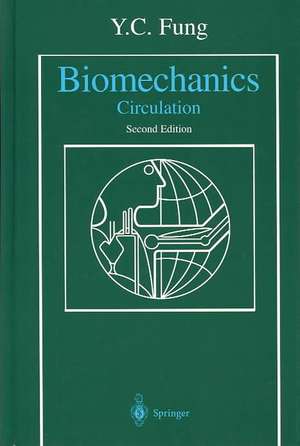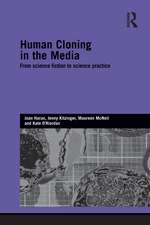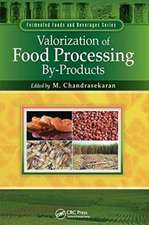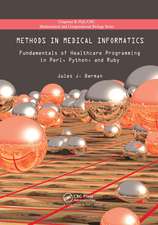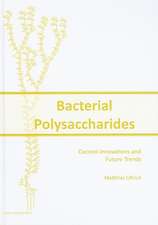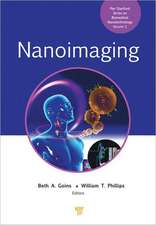Biomechanics: Circulation
Autor Y.C. Fungen Limba Engleză Hardback – 21 noi 1996
| Toate formatele și edițiile | Preț | Express |
|---|---|---|
| Paperback (2) | 1119.14 lei 6-8 săpt. | |
| Springer – 3 dec 2010 | 1119.14 lei 6-8 săpt. | |
| Springer – 10 feb 2013 | 1668.88 lei 6-8 săpt. | |
| Hardback (2) | 1170.26 lei 6-8 săpt. | |
| Springer – 21 noi 1996 | 1170.26 lei 6-8 săpt. | |
| Springer – 9 oct 1998 | 1714.81 lei 6-8 săpt. |
Preț: 1170.26 lei
Preț vechi: 1427.14 lei
-18% Nou
Puncte Express: 1755
Preț estimativ în valută:
223.99€ • 232.96$ • 187.70£
223.99€ • 232.96$ • 187.70£
Carte tipărită la comandă
Livrare economică 13-27 martie
Preluare comenzi: 021 569.72.76
Specificații
ISBN-13: 9780387943848
ISBN-10: 0387943846
Pagini: 572
Ilustrații: XVIII, 572 p.
Dimensiuni: 155 x 235 x 32 mm
Greutate: 2.21 kg
Ediția:2nd ed. 1997
Editura: Springer
Colecția Springer
Locul publicării:New York, NY, United States
ISBN-10: 0387943846
Pagini: 572
Ilustrații: XVIII, 572 p.
Dimensiuni: 155 x 235 x 32 mm
Greutate: 2.21 kg
Ediția:2nd ed. 1997
Editura: Springer
Colecția Springer
Locul publicării:New York, NY, United States
Public țintă
ResearchCuprins
1 Physical Principles of Circulation.- 2 The Heart.- 3 Blood Flow in Arteries.- 4 The Veins.- 5 Microcirculation.- 6 Blood Flow in the Lung.- 7 Coronary Blood Flow.- 8 Blood Flow in Skeletal Muscle.- Author Index.
Recenzii
"Fung has made substantial contributions as a researcher to the underlying material represented here. In the preface, the author indicates his hope that an instructor, using this book as a course textbook, will both teach 'an essential branch of this life science'and provide the student with a background in machanics. To this end, he succeeds." Quarterly Review of Biology
Descriere
Descriere de la o altă ediție sau format:
Biomechanics aims to explain the mechanics oflife and living. From molecules to organisms, everything must obey the laws of mechanics. Clarification of mechanics clarifies many things. Biomechanics helps us to appreciate life. It sensitizes us to observe nature. It is a tool for design and invention of devices to improve the quality of life. It is a useful tool, a simple tool, a valuable tool, an unavoidable tool. It is a necessary part of biology and engineering. The method of biomechanics is the method of engineering, which consists of observation, experimentation, theorization, validation, and application. To understand any object, we must know its geometry and materials of construc tion, the mechanical properties of the materials involved, the governing natural laws, the mathematical formulation of specific problems and their solutions, and the results of validation. Once understood, one goes on to develop applications. In my plan to present an outline of biomechanics, I followed the engineering approach and used three volumes. In the first volume, Biomechanics: Mechanical Properties of Living Tissues, the geometrical struc ture and the rheological properties of various materials, tissues, and organs are presented. In the second volume, Biodynamics: Circulation, the physiology of blood circulation is analyzed by the engineering method.
Biomechanics aims to explain the mechanics oflife and living. From molecules to organisms, everything must obey the laws of mechanics. Clarification of mechanics clarifies many things. Biomechanics helps us to appreciate life. It sensitizes us to observe nature. It is a tool for design and invention of devices to improve the quality of life. It is a useful tool, a simple tool, a valuable tool, an unavoidable tool. It is a necessary part of biology and engineering. The method of biomechanics is the method of engineering, which consists of observation, experimentation, theorization, validation, and application. To understand any object, we must know its geometry and materials of construc tion, the mechanical properties of the materials involved, the governing natural laws, the mathematical formulation of specific problems and their solutions, and the results of validation. Once understood, one goes on to develop applications. In my plan to present an outline of biomechanics, I followed the engineering approach and used three volumes. In the first volume, Biomechanics: Mechanical Properties of Living Tissues, the geometrical struc ture and the rheological properties of various materials, tissues, and organs are presented. In the second volume, Biodynamics: Circulation, the physiology of blood circulation is analyzed by the engineering method.
